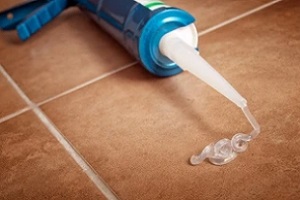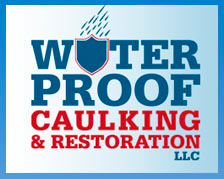 There are many projects that homeowners often attempt to conquer on their own, and caulking can be one such task. However, applying caulk to your building is more nuanced than simply buying the first tube of caulk that you see and squirting it into a crack. In fact, proper caulk application requires some experience and practice to ensure that you get a smooth, complete seal.
There are many projects that homeowners often attempt to conquer on their own, and caulking can be one such task. However, applying caulk to your building is more nuanced than simply buying the first tube of caulk that you see and squirting it into a crack. In fact, proper caulk application requires some experience and practice to ensure that you get a smooth, complete seal.
One of the factors to consider when DIYing your home’s caulk is which type of caulk to select for certain parts of the building. To get you started and ready to make the right choice, here is some more information about the basic uses of each type of common caulking product. Remember—if you decide that you do not feel confident or have questions, you can always ask an expert!
What Caulk Can Do For You
If you are considering repairing or replacing caulk in your home, you may already be feeling the effects of its breakdown—or you may have simply heard that a home’s caulk should be replaced every now and then. When two dissimilar materials are joined on a home’s surface, the area where they meet is vulnerable to moisture intrusion, pest infiltration and drafts.
For example, the gap between your door trim and your siding may let your hot air out in winter and the warm air in during the summer if you do not properly caulk it to block off the open area. In addition, the spaces around windows and even in-home items like sinks are vulnerable to water if not correctly sealed off. Over time, water seepage can damage internal structures like your interior walls.
Where To Use Latex Caulk
Perhaps the most common type of caulk you will encounter is latex caulk, sometimes called acrylic latex. It adheres well to wood, stone and drywall, which makes it ideal for interior uses. However, it breaks down quickly when exposed to water; this is good if you are trying to clean it up, but it is not very good as your choice to seal locations where water seepage is a consistent issue. Instead, use latex caulk indoors to seal off crown moulding, baseboards and the insides of doors and windows. If you use latex caulk in areas where water is not much of an issue, it may last for 10 years or more.
Using Expandable Foam Caulk
Expandable foam is a type of caulk that comes to many people’s minds when they think of caulk in general. It is sprayed on and becomes visibly larger once it has left the can. Getting a consistent, even size on spray caulk can be a challenge, so it is best used for smaller projects like electrical outlets or outdoor openings, such as the space around pipes that exit the home. If you have noticed pest entry holes, expandable foam is a great way to seal them, since most pests cannot chew through.
The Specific Uses Of Butyl-Rubber Caulk
Butyl-rubber is a heavy duty caulk meant for outdoor use. It can be difficult to clean, but it provides an unparalleled seal on roofs, gutters and siding due to its high moisture resistance and ability to withstand severe temperatures and sunlight. It also works on metal, rubber and other smooth substances where other types of caulk may have a hard time adhering properly.
Silicone Caulking For Clear Results
 Silicone caulk often comes in clear form, meaning that it can be used in areas where aesthetics are highly important. It is extremely water resistant, so silicone is your best bet for areas where moisture intrusion is the primary concern (like bathrooms and exterior windows). It is difficult to remove since it is so resistant to moisture, which means you will need solvents if need to remove it due to a mistake.
Silicone caulk often comes in clear form, meaning that it can be used in areas where aesthetics are highly important. It is extremely water resistant, so silicone is your best bet for areas where moisture intrusion is the primary concern (like bathrooms and exterior windows). It is difficult to remove since it is so resistant to moisture, which means you will need solvents if need to remove it due to a mistake.
Also be aware that due to their moisture-wicking properties, many types of silicone also resist paint; you will need to apply silicone caulk over your paint job with the understanding that paint touch-ups may be a challenge later. However, more paintable types are coming into the market.
Trust The Pros To Use The Right Caulk Every Time
Whether you are not confident in your ability to cleanly remove and reapply caulk or you are unsure of which caulk to choose, do not be afraid to rely on the experts instead of tackling this project yourself. The professionals at Waterproof Caulking & Restoration have years of experience achieving that perfect seal that will keep your home’s vulnerabilities protected. Reach out over the phone at (484) 265- 9646 or online to schedule an appointment to discuss your goals and develop a strategy for how to achieve them.
